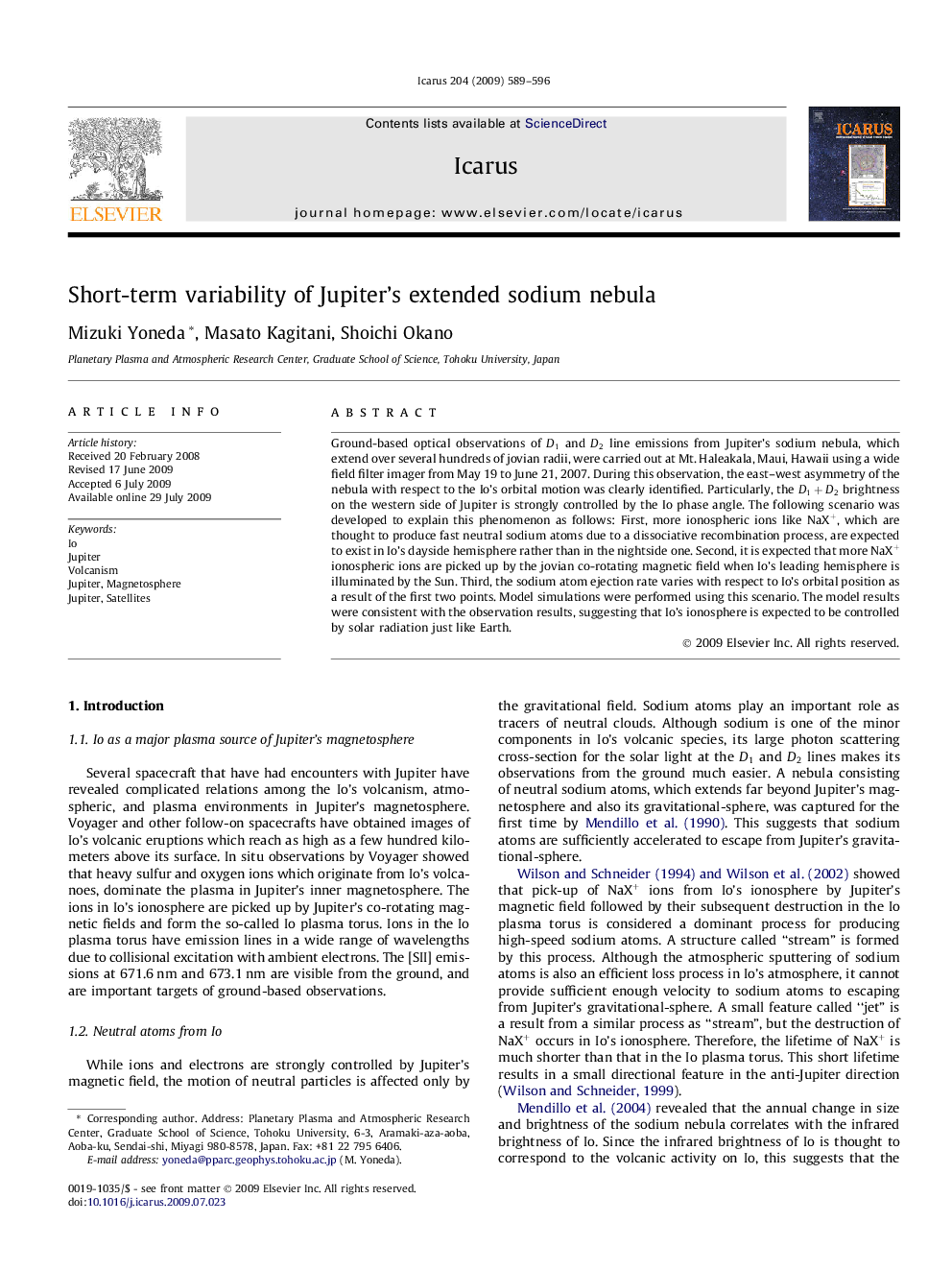| Article ID | Journal | Published Year | Pages | File Type |
|---|---|---|---|---|
| 1774757 | Icarus | 2009 | 8 Pages |
Ground-based optical observations of D1D1 and D2D2 line emissions from Jupiter’s sodium nebula, which extend over several hundreds of jovian radii, were carried out at Mt. Haleakala, Maui, Hawaii using a wide field filter imager from May 19 to June 21, 2007. During this observation, the east–west asymmetry of the nebula with respect to the Io’s orbital motion was clearly identified. Particularly, the D1+D2D1+D2 brightness on the western side of Jupiter is strongly controlled by the Io phase angle. The following scenario was developed to explain this phenomenon as follows: First, more ionospheric ions like NaX+NaX+, which are thought to produce fast neutral sodium atoms due to a dissociative recombination process, are expected to exist in Io’s dayside hemisphere rather than in the nightside one. Second, it is expected that more NaX+NaX+ ionospheric ions are picked up by the jovian co-rotating magnetic field when Io’s leading hemisphere is illuminated by the Sun. Third, the sodium atom ejection rate varies with respect to Io’s orbital position as a result of the first two points. Model simulations were performed using this scenario. The model results were consistent with the observation results, suggesting that Io’s ionosphere is expected to be controlled by solar radiation just like Earth.
